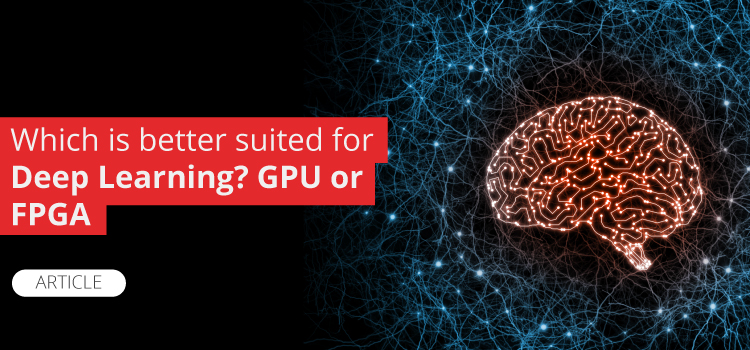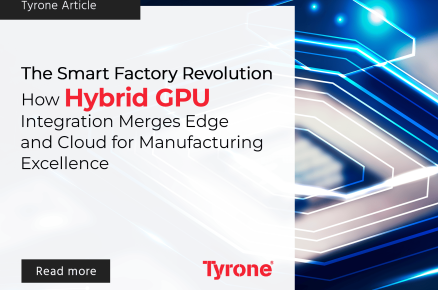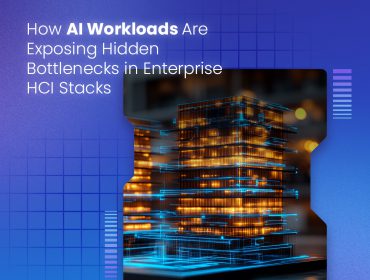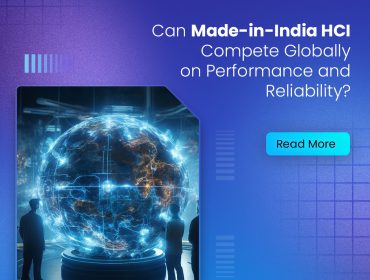Technology has proven to be the sector that innovates every second. New technologies are bettering the efficiencies of this sector largely. One such innovation is Artificial Intelligence and Deep Learning which is evolving rapidly, with new neural network models, techniques, and use cases emerging regularly. Though there is no single framework that works best for all machine and deep learning applications, FPGAs can offer distinct advantages over GPUs and other types of hardware in certain cases.
Field programmable gate arrays (FPGAs) are integrated circuits with a programmable hardware fabric. Not similar to graphics processing units (GPUs), the electrical structure inside an FPGA chip is not hard imprinted, it can be reprogrammed as needed. This capability makes FPGAs an excellent option to GPUs, which require a long time to develop and a significant investment to design and structure it.
There are several reasons why FPGAs are a better option when compared to GPUs. Initially AI workloads, like image recognition, were dependent on a parallel structure. Because GPUs were specifically designed to make video and graphics, using them for machine learning and deep learning were made popular later on. GPUs are excellent at parallel processing, computing in huge number of arithmetic operations in parallel. In other words, they can perform path breaking acceleration in cases where the same workload must be performed many times in rapidly in a repeated manner. But running AI on GPUs has its limitations. GPUs performance is not at par with the performance of ASIC, a chip purpose built for a given deep learning workload.
On the other hand, FPGAs offer hardware modification with integrated AI and can be programmed to deliver results and replicate behaviour similar to a GPU or an ASIC. FPGA can be reprogrammable and reconfigurable in nature; hence it lends itself well to a rapidly evolving AI environment, allowing designers to test algorithms swiftly and get to market fast. FPGAs offer several advantages for deep learning applications and other AI interfaces:
1. Great performance with high output and low inactivity – FPGAs can fundamentally provide low potential as well as a determined latency for real-time applications like video streaming, transcription, and action recognition by directly uploading the video into the FPGA, completely avoiding the CPU. Designers can create various neural networks from the beginning and structure the FPGA to best suit the model of the computer.
2. Delivers higher value and is cost effective: FPGAs can be reprogrammed and restructured for different functions and data types, making them one of the most efficient and cost-effective hardware options available. Furthermore, FPGAs can be used for more than just AI and while utilising the neural networks can also have the capability of handling cloud efficiently. By combining the additional capabilities of this technology onto the same chip, programmers can save on additional cost and designing space. It is known that FPGAs have long life cycles, so hardware designs based on FPGAs can have a long product life, for years or decades. This characteristic makes them best for use in industrial defense, medical, and automotive sectors.
3. Efficient power consumption: With FPGAs, designers can modify the hardware to the desired application, and meet power regulation requirements. FPGAs can also integrate multiple functions, deliver from more energy efficiency from the chip. It is logical to use a portion of an FPGA for a particular function, rather than the whole chip, it will allow the FPGA to undertake multiple functions simultaneously.
4. Minimising the input/ output difficulties: FPGAs are very useful where the information must pass a wide array of networks at low latency. They’re unbelievably valuable at taking out memory buffering and defeating I/O bottlenecks, which is one of the most constraining factors in AI’s performance. By fast-tracking data consumption, FPGAs can speed the entire AI workflow.
5. Promoting high performance computing (HPC) clusters: FPGAs can help encourage the combination of AI and HPC by filling in as programmable accelerating agents for interpretation.
Our AI expertise helps organizations solve real business problems by uncovering data-driven decisions. Our deep technology expertise across the complete data analytics process, multi-disciplinary teams and unique solution-based approach make us a preferred technology partner of choice.
For more information: https://netwebcsp.com/ai-and-machine-learning-service/












